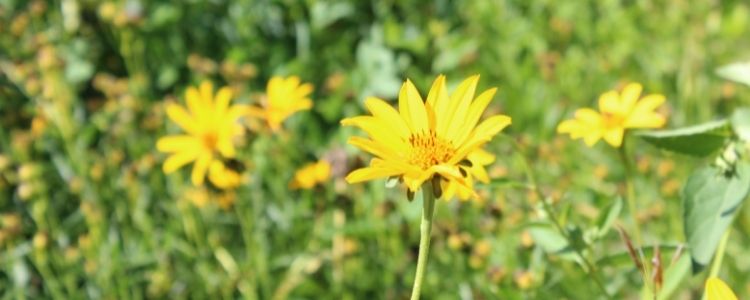This plant lends a beautiful golden glow to our landscape. The tiny clusters of yellow flowers attract butterflies and native bees. Swallowtail butterflies use this plant as a food source for their larvae, so when you see Golden Alexander see if you can also find the caterpillars who live there.
Commonly confused with Wild Parsnip. However, it can be easy to distinguish from the Golden Alexader because of the size difference and color/form. Wild Parsnip will be larger in height, usually around 5 feet, and also have larger-sized flowers.

